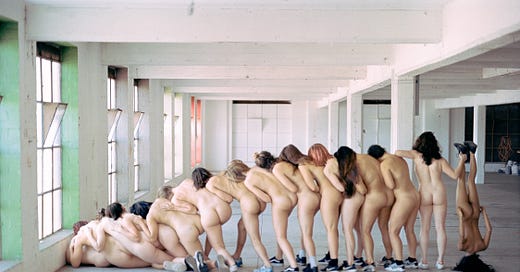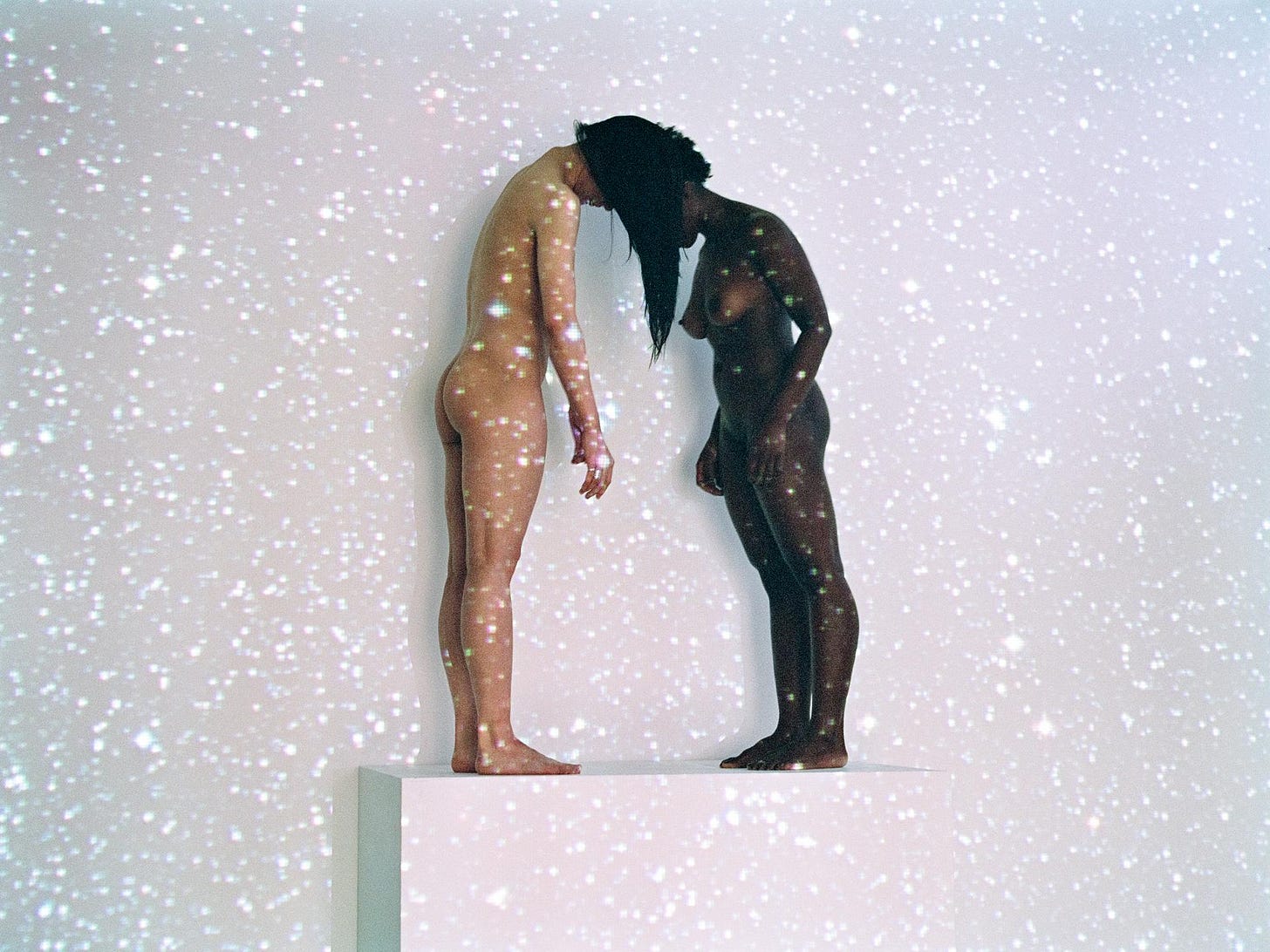Quantum photography Season 3 Artist Interview: AdeY
We sat down with AdeY to learn more about her vision and what brought him to create his collection "Uncensored."
Swedish-British artist AdeY studies subjects such as the human balance, strength and physics. Photographing subjects undressed, AdeY’s non-sexualized representation challenges our perceptions of the body, highlighting our vulnerabilities, loneliness, and strengths as central to the human condition.
Building on a background in performance, choreography, and dance, Swedish-British artist AdeY studies subjects such as the human balance, strength and physics. Photographing subjects undressed, AdeY’s non-sexualized representation challenges our perceptions of the body, highlighting our vulnerabilities, loneliness, and strengths that are central to the human condition.
We sat down with AdeY to learn more about her vision and what brought him to create his collection "Uncensored."
Quantum: Who have been your biggest artistic influences, and why?
AdeY: I’ve had many different influences throughout the years as my career has developed from contemporary dance to performance art, to photography and visual arts. Four names that came into my head when I first read this question are Dimitri Papaioannou, Salvador Dalí, Nan Goldin and David Bowie - who was my idol when I was young.Dimitri Papaioannou is a Greek stage director and choreographer. I love the worlds he creates and find his work breathtaking. It’s in many ways simplistic in form yet he conveys such strong raw emotion throughout his works.As a young teenager I went to see a large Salvador Dalí exhibition at the Southbank in London. It was the first time art really spoke to me on a deeper level. Dalí’s surrealism felt like how I saw the world when I closed my eyes.The first photobook I ever bought was Nan Goldin’s The Ballad of Sexual Dependency. I instantly loved her images and it is still one of my favourite books I own. The honesty and intimacy she shared is beautiful yet heartbreaking.David Bowie for me was like no other. I admired the freedom he seemingly had with with his art and life. A queer person in the mainstream before queer became the mainstream.
Quantum: What was the process of creating the artwork for this collection?
AdeY: My artworks presented here are part of a long ongoing project that started back in 2014. My images are very much in the analog world as I shoot all of my photographs on film and develop, scan and print them all by myself. It takes a lot of patience and dedication to commit to this process but the rewards for me are worth it.My models are mostly friends who are artists working professionally as performers or dancers. Their faith and trust in me helped develop my body of work and give me confidence to share it. As my project grew people started contacting me to be in my images which helped expand my themes and language expressed in the photos.When it comes to planning a shoot I normally find a location and think about who would work well in that space. I then sketch down stick people as starting points and try to allow the models freedom to improvise around my bad drawings. I then direct the models to a position to capture the image. I occasionally do spontaneous shoots discovering a location as the models strip off and I franticly start loading film in the camera.
Quantum: Precisely what is it you want to say with this collection, and how do you get your artwork to say that?
AdeY: My project started out as I was sick of how the body was being used in commercial photography with the automatic association of nudity = sex. Initially I wanted to prove to myself that you could create images of nude people that would talk about something else. In the early stages of my work I focused only on the connection of body and space.As the project developed I wanted to explore ideas around identity, gender and human connection. I do this in my work by showing how the body can express so much through its relationship with the surrounding space and people. Through my body of work, I have created my own world, an alternative world that I would like to live in.
Quantum: Is there a piece that embodies the overall collection and can you share the story behind it?
AdeY: It’s difficult for me to think of one piece that embodies all that I want to say but if I were to pick one it would be She-man Part II. In my images I want a youthful innocence like children running around naked with not a care in the world. She-man Part II for me is an uplifting image showing the strength and fragility we all have. As children we fuse fiction and reality to create our own stories and this is the world I want to continue to create with my images.
Quantum: How did you first encounter NFTs and Cryptoart, and when did it click for you that there was a lot of potential here?
AdeY: A close friend of mine bought an NFT around 2018 and told me this is the future of art. It was a panda dressed as C-3PO from Star Wars called P-3PO… I was skeptical to say the least! Fast forward to 2020 and like many others I was at home living my life online due to the lockdown. My attention was being pulled towards NFTs daily as artists I knew were experimenting with it. I also saw someone’s virtual space they had created to present their private collection and was blown away with the potential. I bought a Oculus Quest 2 headset around this time to explore the Metaverse which was a lot fun but I mostly ended up playing Beatsaber to K-Pop music.







